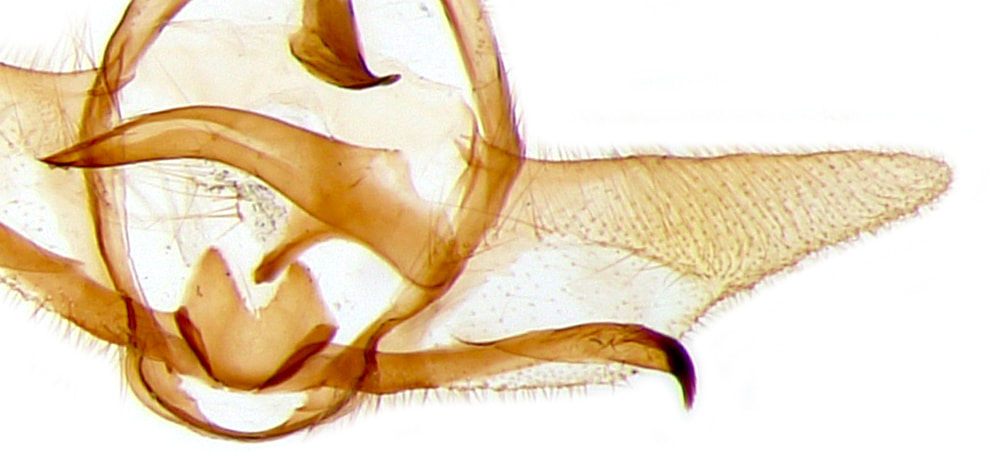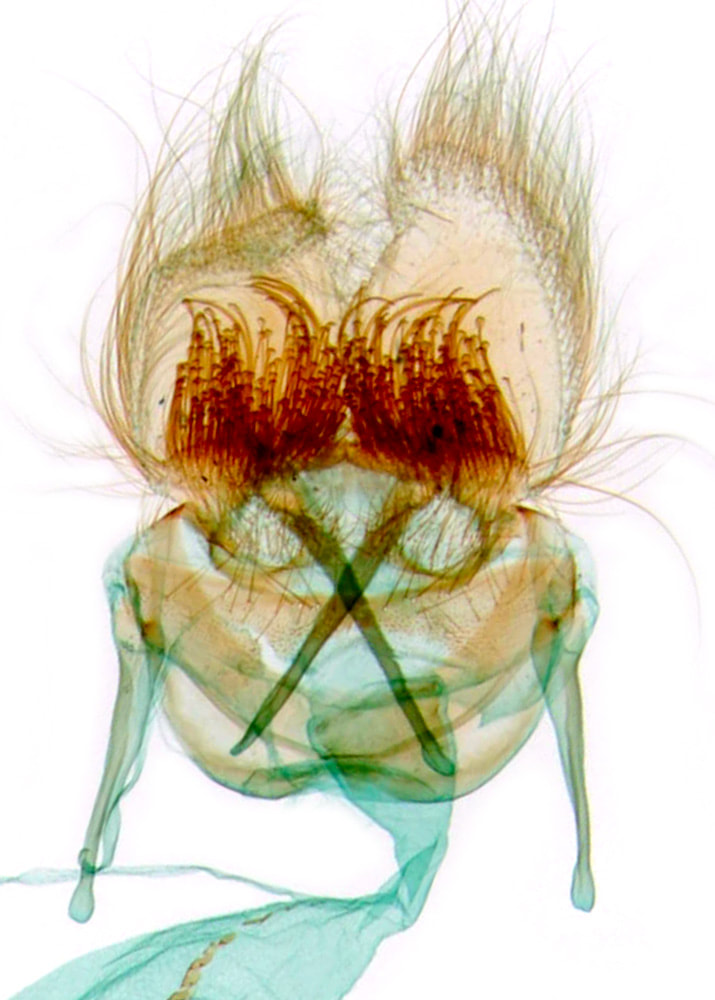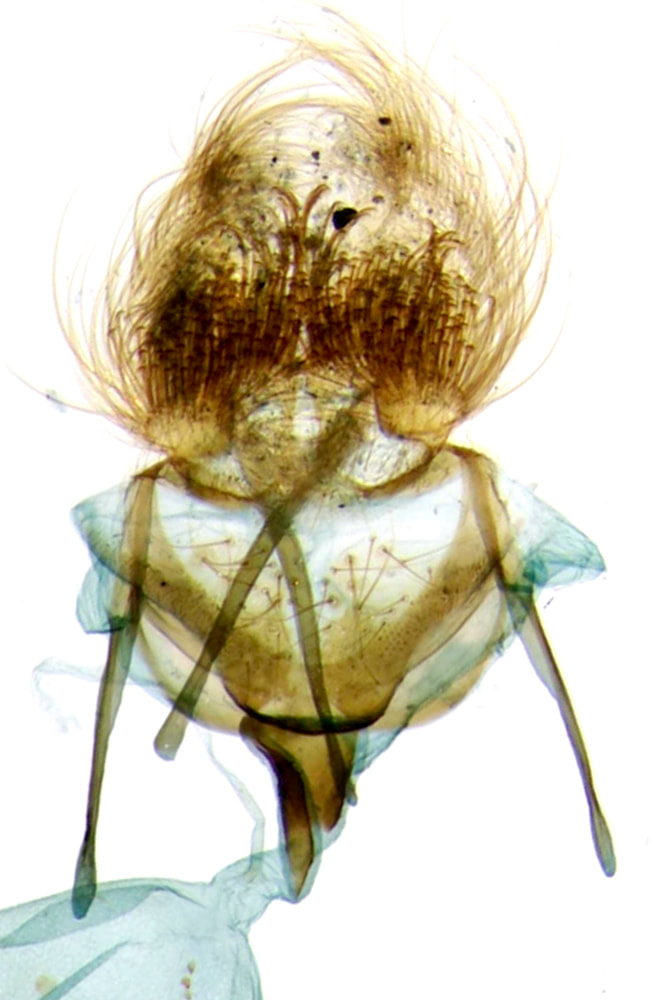Cnephasia |
Typical Cnephasia species are grey/brown with darker, more-or-less angular, subbasal, median and subterminal fasciae, extending obliquely distally from the costa and often obsolete at the dorsal end. The subbasal fascia is usually noticeably the narrowest and shows a midwing projection towards the the median fascia which usually shows a corresponding concavity. The subterminal fascia is usually incomplete and may be restricted to a preapical patch. The shade of grey/brown, the distinctness of the markings, the amount of black admixture of the markings and the degree of white/ochreous irroration all show considerable intraspecific variation. Most species are sufficiently similar that they cannot be reliably identified on external features.
Eana incanana shows a similar pattern but can be recognised by its short bold subbasal fascia which forms a distinct 'shoulder' patch.
Eana incanana shows a similar pattern but can be recognised by its short bold subbasal fascia which forms a distinct 'shoulder' patch.
External features
C.longana is the only Cnephasia that can usually be reliably identified without genital dissection. It shows pronounced sexual dimorphism; the male is distinct from all other Cnephasia species in having a unicolorous ochreous forewing; the female is also distinct in having pale ochreous ground colour and ochreous brown markings with the fascia more diffuse and often merging along the costa.
C.longana is the only Cnephasia that can usually be reliably identified without genital dissection. It shows pronounced sexual dimorphism; the male is distinct from all other Cnephasia species in having a unicolorous ochreous forewing; the female is also distinct in having pale ochreous ground colour and ochreous brown markings with the fascia more diffuse and often merging along the costa.
Biological features
C.communana is the most likely Cnephasia to be found flying in May. However this may not be particularly helpful or reliable - the earliest date I have for C.communana is 16th May, the earliest date I have for C.stephensiana is 22nd May.
C.communana is the most likely Cnephasia to be found flying in May. However this may not be particularly helpful or reliable - the earliest date I have for C.communana is 16th May, the earliest date I have for C.stephensiana is 22nd May.
Subgenus Cnephasia
Males are distinguished primarily on the length of the sacculus relative to the length of the valva. The shape of the apex of the sacculus is also useful but caution is needed as its apparent shape, angle and degree of projection in a set specimen may vary with the amount of compression applied. In some species the shape of the aedeagus may be useful but again caution is need as the apparent shape varies with any rotation of the aedeagus in its long axis. "Teeth" at the apex of the aedeagus seem to be variable and when present their visibility varies with rotation of the aedeagus; they are particularly prominent in C.longana which also has a very short sacculus (SR 0.4-0.5).
In the images below marginal setae and hair scales have been trimmed to the valval edges in photoshop. Sacculus ratio (SR) is sacculus length/valva length with both measured from the base of the sacculus to their respective apices. The description that follows SR refers to the sacculus.
Males are distinguished primarily on the length of the sacculus relative to the length of the valva. The shape of the apex of the sacculus is also useful but caution is needed as its apparent shape, angle and degree of projection in a set specimen may vary with the amount of compression applied. In some species the shape of the aedeagus may be useful but again caution is need as the apparent shape varies with any rotation of the aedeagus in its long axis. "Teeth" at the apex of the aedeagus seem to be variable and when present their visibility varies with rotation of the aedeagus; they are particularly prominent in C.longana which also has a very short sacculus (SR 0.4-0.5).
In the images below marginal setae and hair scales have been trimmed to the valval edges in photoshop. Sacculus ratio (SR) is sacculus length/valva length with both measured from the base of the sacculus to their respective apices. The description that follows SR refers to the sacculus.
Subgenus Cnephasia
Females are distinguished on mainly on features of the colliculum (C)
Females are distinguished on mainly on features of the colliculum (C)
Page published 18/08/2023


















